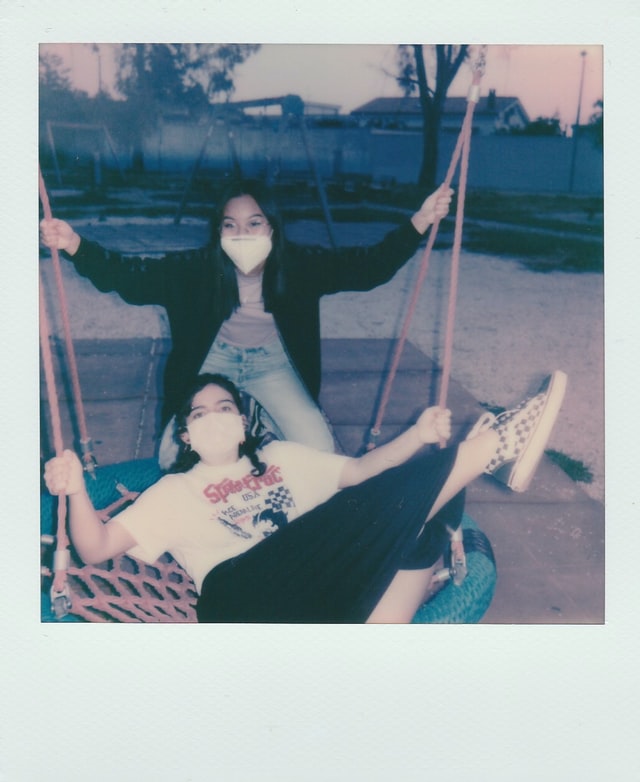It seems like there is light at the end of the tunnel with the COVID-19 pandemic.
Many people around the world (though not all) are getting vaccinated. Many people in the United States are already fully protected with their two doses.
You’d think that would give people the confidence to get back out there and back to normal—hanging out with friends and family, going to things that traditionally have large gatherings of people like sports events (American football comes to mind), or just having BBQs or parties with friends and family.
But not all of us are looking forward to facing the chaotic world outside of the bubbles that we’ve built around ourselves for the last year and a half during this worldwide pandemic.
This hesitancy is something we’re calling relational ambivalence—the idea that we’re missing the normal human contact that we require as the social animals we are, and we really want to “get back out there,” but we’re kind of anxious or wary of some aspects of society (for example, politics and some people’s opinions).
Maybe we’re finding that we are seeking ways to not reengage with the world the way we did back when everything was “normal.”
Some of you might be uncomfortable in large gatherings sans-mask. Some might be feeling squirrely about continuing to telecommute and work from home. It’s become such a normal thing, that the phrase “work from home” has now been abbreviated to WFH, and many people know what those three letters mean.
On the other hand, you might feel anxious going back into the workplace now that a lot of places are starting to open up again. Or it may be that over this pandemic, our connections to our families have changed—either we’ve become more distanced from them because we haven’t been able to see them, or we’ve grown closer thanks to the technology of Zoom and other video-calling platforms.
Maybe your connections to strangers (aka mainly the online world) have gotten stronger thanks to Zoom—you’re connecting more with people you don’t really know because you spend most of your time in a virtual world now.
All of these conflicting thoughts, ideas, and concerns can leave us feeling frazzled, confused, and frankly, indecisive, and ambivalent.
Apparently, the term “cave syndrome” has been used in the media and around the internet to describe people who might not be comfortable getting back to normal life after Covid is over. The term refers to people who get too comfortable in their caves (aka homes) after being confined to them for so long.
However, psychologists say that the term minimizes the variety of reasons that people may not want to leave their homes and reenter society at large. It could be that they really are just happier at home (it’s cheaper with no commute, for example). It could be just “ordinary” anxiety and trepidation about getting back out there, or it could be that some have actual mental health issues, such as depression or an anxiety or panic disorder.
So labelling everyone with “cave syndrome” oversimplifies and tars everyone with the same brush—those who don’t have mental health issues and have normal (but valid) reasons not to want to go back to the way things were and those who do have diagnosed (or undiagnosed) issues and have reasons not to reintegrate based on those mental health issues.
Considering all this ambivalence, how can we transition back to “the real world” once it’s safe to do so, wherever we are in the world?
One suggestion we can give, as yoga teachers, is this: reconnect with yourself again, as you may feel like you’ve been disconnected from life during the past year and a half.
This pandemic has brought upon us a worldwide form of trauma due to all the loss, heartbreak, uncertainty, and upheaval of our normal daily routines, not to mention the major changes experienced around the world.
One way to begin your own healthy facilitation of reconnection is through yoga. If you’ve never done yoga before, don’t worry, there are many free options on YouTube, and several different styles to explore—Hatha, Yin, Restorative, Power, Ashtanga.
Moving your body and connecting to your breath is a great way to ground yourself when you feel disconnected from everything. Even sitting quietly for a brief time and just breathing, focusing on your breath, and observing your whole body as you’re sitting can help. Really notice it. Become present. Notice that you’re here, you’re alive, you’re breathing.
And really, when it comes down to it, that awareness is the most important thing, and it can help you gain the courage to release ambivalence and to support and encourage healthy reconnection in a way that works for you.
To begin, find a quiet place and try this short breath and yoga sequence. It will allow you a healthy reset when you need it!
Sequence for Relational Ambivalence and Relational Reset:
Alternate Nostril Breathing (Nadi Shodhana) (3-5 minutes)
Make the “hang loose” sign with your right hand, folding your three middle fingers down so only the thumb and pinky are up. Block your right nostril with your thumb and inhale through your left nostril.
At the top of the inhale, plug your left nostril with your pinky, pause, holding your breath, and then take your thumb off your right nostril, and exhale through the right side. Inhale back up through your right nostril.
At the top of the inhale, cover your right nostril with your thumb, pause, holding your breath; then remove your pinky from your left nostril and exhale through the left side. Then inhale on the left. And repeat.
Do this a few times alternating blocking one nostril then the other (3-5 times per side). Then lower your hand and inhale and exhale through both nostrils to balance it out
Supported Child’s Pose (Balasana) (3 minutes)
Kneel with knees together or knees as wide as your yoga mat, sitting on your heels. Walk your hands forward, keeping your hips as close to your heels as you can, and rest your forehead on the mat.
This pose can be supported using a bolster, or several pillows over which you can drape your body. Use the bolster to, in essence, raise the floor as you maintain the pose.
Reclining Cobbler’s Pose (Supported Supta Badha Konasana) (3 minutes)
Lie down on your back, bending your knees, feet flat on the floor. Then let your knees fall open to the sides, soles of the feet together.
If desired, you can use a blanket to raise the upper half of your body just a little bit, by placing it underneath your back. If you desire a more intense backbend feeling, you may use a bolster. In order to protect your hips or to decrease the intensity in your hips, place a block, or pillow under each knee as the soles of the feet are together. Place your arms on your belly or by your side, depending on your level of comfort. You can even spread your arms out wide, in order to work in a gentle heart space opening.
Supported Corpse Pose (Savasana) (4 minutes)
Savasana is traditionally simply lying on the ground, allowing your palms to face upward and your feet to fall open naturally. Supported, you lie back on a bolster, rolled up blanket, or pillows along your spine (and back of your head).
This pose provides a yummy, nurturing option to the traditional corpse pose. A blanket is folded to your desired height (or you can use pillows) and placed under the top half of your body underneath your shoulder blades.
Your legs are supported by placing a bolster, or again, pillows, to your desired height. You can place your arms on your belly, by your side, or possibly spread wide, in order to facilitate heart opening in a safe, supportive space.
If you are crunched for time or need something quicker, try Viparita Karani, or Legs Up the Wall!
You can do this by lying on your back placing your bum against a wall and swinging your legs up so they are resting against the wall, feet pointing toward the ceiling/sky. You can do this without a wall by lying on your back and lifting your legs up to the ceiling, feet flexed. It can be supported by placing a block underneath the sacrum (small of the back).
Choose how long you want to stay in this pose, based on how you feel the pose in your body.
~
For more from Caitlin & Susan:
Caitlin’s author page
Susan’s author page
~












Read 23 comments and reply